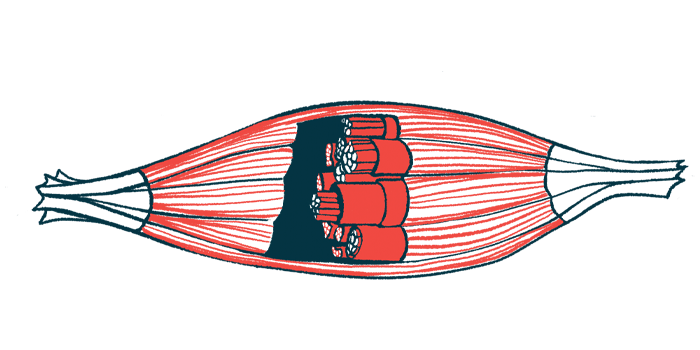Low Frataxin Results in Loss of Lean Body Mass, Weak Muscles in FA

Children and adults with Friedreich’s ataxia (FA) have lower lean body mass — simply put, the weight of everything in the body except fat — than healthy individuals of about the same age, a study found.
Using mice, researchers showed that this loss of lean body mass occurred when frataxin — the protein that is lacking in patients with FA — was down to about 5% of its normal levels. The loss of lean body mass resulted in a weaker grip and overall muscle weakness, and did not improve with exercise.
It remains to be seen whether these findings hold true for patients with FA, the researchers noted.
“Our findings suggest that measurements of body composition using [specific x-ray scans called] DXA may yield important insights in [Friedreich’s ataxia] pathology [disease features],” the team wrote, noting that lean body mass “correlated with disease severity” in FA.
The study, “Frataxin deficiency lowers lean mass and triggers the integrated stress response in skeletal muscle,” was published in the journal JCI Insight.
Friedreich’s ataxia is caused by changes in the FXN gene, which provides instructions for making frataxin, a protein found in energy-producing structures called mitochondria.
This gene contains a sequence of three building blocks, called GAA, that is repeated a number of times in a row. In healthy people, this number ranges from five to 33 repeats. In most patients with Friedreich’s ataxia, it can be up to 1,000 times.
The number of GAA repeats is linked to how severe symptoms are, and how quickly they progress. One such symptom is weakened and wasted muscles. However, little attention has been given to date to muscle changes in patients with FA.
To know more, the researchers used bone density scans to look at the body composition of 24 adults with Friedreich’s ataxia. Their median age was 26.5, and median disease duration was 17.0 years. Compared with age-matched healthy individuals, adults with Friedreich’s ataxia had significantly lower lean body mass, as well as less lean muscle mass in the legs. Their body mass index (BMI), a measure of body fat based on weight and height, was similar.
Much the same observations were made in a group of 10 children with Friedreich’s ataxia, who had a median disease duration of 6.4 years.
In adults, but not in children, having less muscle correlated with more severe disease, as measured by modified Friedreich’s Ataxia Rating Scale (mFARS) scores. However, it did not correlate with the number of GAA repeats.
Next, the researchers used mice in which frataxin was depleted starting at 9 weeks — an age that corresponds to young adulthood in humans.
At 18 weeks, the levels of frataxin in the mice in which it was depleted were about 4% of those of wild-type mice (controls). When the researchers weighted the triceps muscle (arm), they found that it was lighter in the mice with low levels of frataxin. To see if less muscle translated into weaker muscle, the researchers used a grip strength test to evaluate how strongly the mice could hold onto a grid. The results showed that both forelimb and hindlimb grip strength was impaired.
When the researchers looked more closely at the muscle tissue, they found that its fibers were thinner and that it produced a limited amount of protein compared with that of wild-type controls.
Integrated stress response or ISR is a cell’s way of responding to stress, by tuning down protein production. As the amount of protein was lower in frataxin-poor muscle tissue than in wild-type controls, the researchers watched for changes in the ISR. They found that it was turned on in the mice with low frataxin.
To test whether exercise could revert both the loss of muscle tissue and the activation of the ISR, the researchers trained the mice to run on a treadmill five days a week, for a total of four weeks. While exercise training improved the ability of frataxin-poor mice to run on an inclined treadmill, it did not prevent the loss of muscle tissue or the activation of the ISR at 18 weeks.
“FXN loss can lead to lower lean mass, with ISR activation, both of which are insensitive to exercise training,” the researchers wrote.
According to them, this is the first report of how low levels of frataxin may affect how muscle tissue grows and responds to stress; further research is needed, they added.







